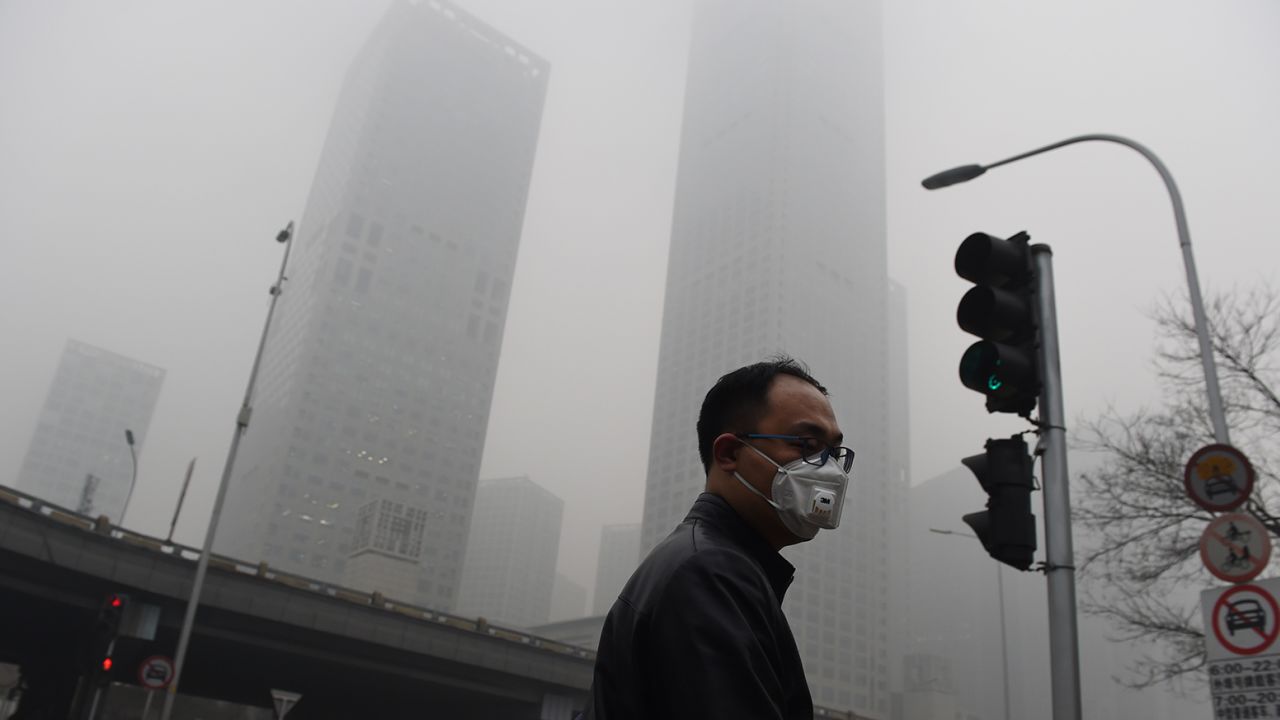
Sustainable Development Goals (SDGs) and China’s Progress in Combating Pollution
Introduction
- China’s capital, Beijing, was notorious for its dense yellow and gray smog ten years ago.
- The pollution was so severe that it became known as Beijing’s “air-pocalypse.”
- In response, Chinese leaders launched a multibillion-dollar “war against pollution.”
China’s Success in Combating Pollution
- According to a recent report, China’s pollution levels have fallen by 42% since 2013.
- This significant improvement makes China a rare success story in the region, where pollution is worsening in some parts.
- The average Chinese citizen’s lifespan has increased by 2.2 years due to the improved air quality.

Acknowledgment of China’s Progress
- The annual Air Quality Life Index report produced by the Energy Policy Institute at the University of Chicago praised China’s “staggering success in combating pollution.”
- Global pollution levels have slightly decreased from 2013 to 2021, primarily due to China’s progress.
Remaining Challenges and Comparison with Other Countries
- Despite the progress, China remains the world’s 13th most polluted country.
- Beijing’s particulate pollution is still 40% higher than the most polluted county in the United States.
- China’s particulate pollution levels significantly exceed the World Health Organization’s guidelines.
Factors Contributing to China’s Success
- The Chinese government has implemented various measures, including limiting the number of cars on roads, banning new coal plants in heavily polluted areas, reducing emissions from existing plants, and curbing high-polluting industrial activities.
- Political will and adequate resources have played a crucial role in driving these actions.
Deadly Air in South Asia
Worsening Pollution Situation in South Asia
- South Asia is now considered the “global pollution epicenter,” with Bangladesh, India, Nepal, and Pakistan being the four most polluted countries.
- These countries collectively account for nearly a quarter of the world’s population.
Impact on Life Expectancy
- In each of these countries, the average resident is losing five years of their lifespan due to pollution.
- Air pollution has a greater effect on life expectancy in South Asia than tobacco use or unsafe water.
Causes of Increasing Pollution in South Asia
- Rapid population growth, economic development, and industrialization have led to increased energy demand and fossil fuel use in South Asia.
- Other contributing factors include crop burning and the use of brick kilns.
Challenges Faced by South Asian Countries
- The governments in these regions are implementing initiatives and policies to address pollution but face challenges due to economic disparities and inadequate infrastructure.
- Establishing reliable and publicly accessible air quality data is a crucial step in addressing air pollution.
Need for International Support
- Aid from international organizations and private donors could help build the necessary infrastructure to combat pollution in South Asia.
- Currently, there is a lack of dedicated funds for fighting pollution in these regions.
Conclusion
- China’s progress in combating pollution demonstrates that change is possible with political will and adequate resources.
- However, there is still work to be done, both in China and in other highly polluted regions like South Asia.
SDGs, Targets, and Indicators
SDG 3: Good Health and Well-being
- Target 3.9: By 2030, substantially reduce the number of deaths and illnesses from hazardous chemicals and air, water, and soil pollution and contamination.
- Indicator: Pollution levels in China have fallen 42% from 2013, according to a report.
SDG 11: Sustainable Cities and Communities
- Target 11.6: By 2030, reduce the adverse per capita environmental impact of cities, including by paying special attention to air quality and municipal and other waste management.
- Indicator: China’s efforts to combat pollution have resulted in improved air quality in cities like Beijing.
SDG 13: Climate Action
- Target 13.1: Strengthen resilience and adaptive capacity to climate-related hazards and natural disasters in all countries.
- Indicator: China’s progress in reducing pollution has contributed to a slight decrease in global pollution levels from 2013 to 2021.
SDG 17: Partnerships for the Goals
- Target 17.17: Encourage and promote effective public, public-private, and civil society partnerships, building on the experience and resourcing strategies of partnerships.
- Indicator: The report highlights the importance of political will and resources in achieving successful pollution reduction efforts.
Table: SDGs, Targets, and Indicators
| SDGs | Targets | Indicators |
|---|---|---|
| SDG 3: Good Health and Well-being | Target 3.9: By 2030, substantially reduce the number of deaths and illnesses from hazardous chemicals and air, water, and soil pollution and contamination. | Pollution levels in China have fallen 42% from 2013, according to a report. |
| SDG 11: Sustainable Cities and Communities | Target 11.6: By 2030, reduce the adverse per capita environmental impact of cities, including by paying special attention to air quality and municipal and other waste management. | China’s efforts to combat pollution have resulted in improved air quality in cities like Beijing. |
| SDG 13: Climate Action | Target 13.1: Strengthen resilience and adaptive capacity to climate-related hazards and natural disasters in all countries. | China’s progress in reducing pollution has contributed to a slight decrease in global pollution levels from 2013 to 2021. |
| SDG 17: Partnerships for the Goals | Target 17.17: Encourage and promote effective public, public-private, and civil society partnerships, building on the experience and resourcing strategies of partnerships. | The report highlights the importance of political will and resources in achieving successful pollution reduction efforts. |
Behold! This splendid article springs forth from the wellspring of knowledge, shaped by a wondrous proprietary AI technology that delved into a vast ocean of data, illuminating the path towards the Sustainable Development Goals. Remember that all rights are reserved by SDG Investors LLC, empowering us to champion progress together.
Source: cnn.com

Join us, as fellow seekers of change, on a transformative journey at https://sdgtalks.ai/welcome, where you can become a member and actively contribute to shaping a brighter future.






